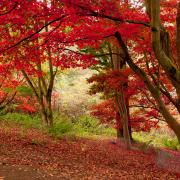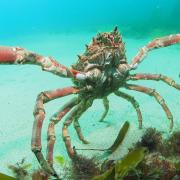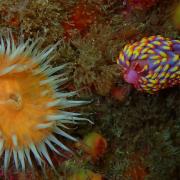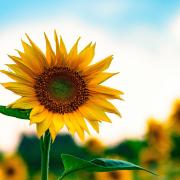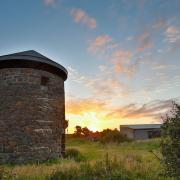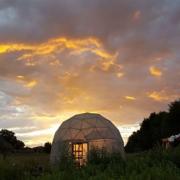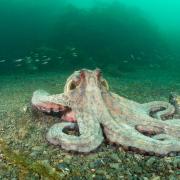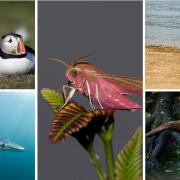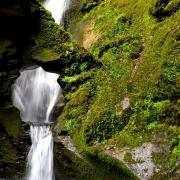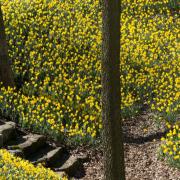In this March issue, the Cornwall Wildlife Trust takes us on a tour of the Kennall Vale Nature Reserve near Ponsanooth, near Penryn
Gunpowder, Wildlife and Wizards
Callum Deveney, Reserves Manager for the Cornwall Wildlife Trust, takes us on a tour of the Kennall Vale Nature Reserve
If you came across a wood that had a history of explosions, where it is not unusual to see dead man's fingers, where birds walk under water and where, in future, wizards may roam, you would expect some warning, perhaps even a 'Keep out' sign. Not so at Kennall Vale Nature Reserve, a 20-acre nature reserve in a granite valley through which runs the River Kennall. It is a special place for both people and wildlife and is located near Ponsanooth, near Penryn.
Of particular interest are the spectacular ruins of the 19th-century gunpowder works, designated a Scheduled Ancient Monument and, in terms of international significance, on a par with the Great Wall of China and Stonehenge. Kennall Vale is part of the World Heritage site of the Cornwall and West Devon Mining Landscape, which is made up of ten areas that represent former mining districts, associated settlements and ancillary industrial concentrations from the period 1700-1914. The gunpowder works are an example of the latter and testament to this period of industrialisation and innovation that had a huge influence on world mining during the 19th century.
The Cornwall Wildlife Trust has produced a new leaflet for this site, which visitors can use simply as a guide to the nature reserve or for a more in-depth look at the layout of the gunpowder works. Parking, for those who cannot make it on foot or by bike, is tricky and is probably best away from the access track (OS grid ref SW753375) so as not to obstruct the entrance. There is an information board immediately on the right as you go through the gate and this also shows the route around the site.
Views from the top access track vary with the season and if you visit in spring or summertime the leaves on the trees are likely to obscure some of the treasures you have in store. Winter sees Kennall Vale in its full glory, particularly after a heavy rainfall. Water brings the site alive, with the River Kennall tumbling powerfully over granite boulders. The power of water holds the key to the site's industrial past as it was the river and intricate leat system that drove the water wheels of the Kennall Gunpowder Company.
The Kennall Gunpowder Company
Established in 1812, the gunpowder works employed over 50 men during its peak years in the 1870s. At this point the Kennall Gunpowder Company consisted of the original works in Kennall Wood, including the Manager's House, Sulphur Mill and workshops, the 'new' works in Roches Wood that was higher up the valley, the farm below the main works, the Saltpetre Refinery, the Magazines adjacent to the farm and the Charcoal Mill in Ponsanooth. In addition, the company also owned several cottages in the village.
Following the decline of Cornish mining and a reduction in demand for gunpowder, the works were sold at the end of the 19th century. The new owners continued with the production of cartridge and fuse powder but production ceased altogether in 1910.
The first evidence of the works that visitors will come across is the substantial 'packing house' on the left, which up until a recent fire still had its original roof. Further down the track is a tranquil old quarry. Now full of water, it has an impressive rock-face backdrop and is the occasional home of a family of Muscovy ducks whose wild ancestors originated from the tropical forest lakes of Central and South America.
On from the quarry, the path forks right across a footbridge but if you carry straight on you will come to a dead end, where the remains of the 'corning house', with its underground wheel pit, can be found. Look out on this path for a southern beech, a tree that grows so straight that it is no surprise they were once used for masts in shipbuilding.
The more adventurous and sure-footed can cross the footbridge to follow the path that meanders through the water mills, with bird's-eye views of the wheel pits, but take extra care along this route as it can be very wet and slippery. The path continues alongside the river, where, if you are lucky, you will see a dipper flying from rock to rock. The dipper's name derives from its habit of bobbing up and down and frequently cocking its tail when perched on rocks. It does not have the typical characteristics of an aquatic bird (with webbed feet, etc) but has evolved remarkable methods for hunting. It swims underwater using its wings, can walk along the bottom with its wings held out to prevent it bobbing to the surface and can also swim on the surface, making dives into the water. Dippers build their nests in stone crevices, below a bridge or behind a waterfall, using straw and moss as building materials.
The damp atmosphere supports a lush diversity of plants, with abundant ferns, mosses and fungi such as dead man's fingers. Dead man's fingers, so-called because of its appearance, actually has a number of different guises during its life span. When young it is pale (often bluish) with a whitish tip. By summer the mushroom begins to blacken and by late summer or autumn it is entirely black. Somewhere in the middle of this progressive transformation, its does indeed live up to its name as it resembles a set of 'dead man's fingers'.
The trees at Kennall Vale were originally planted to retain the dampness and to provide extra protection in the event of explosions. Unfortunately, explosions did occur and there are records of one unfortunate victim who received such a fierce blast that his head was blown a quarter of a mile across the wood. A less dramatic exit from the wood involves making your way back up to the main path.
If you are still wondering about the wizards, this was a reference to a call I had from a Japanese film crew who wanted to film a programme about Harry Potter at Kennall Vale. This enchanted wood obviously inspired their imagination, as I hope it will yours.
For further information contact the Cornwall Wildlife Trust on (01872 273939 or visit www.cornwallwildlifetrust.org.uk







